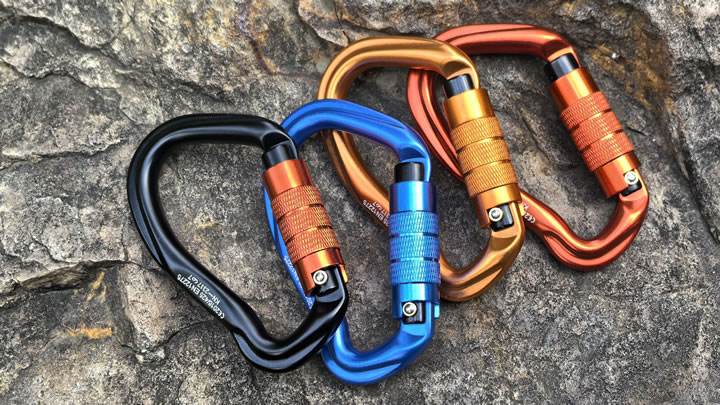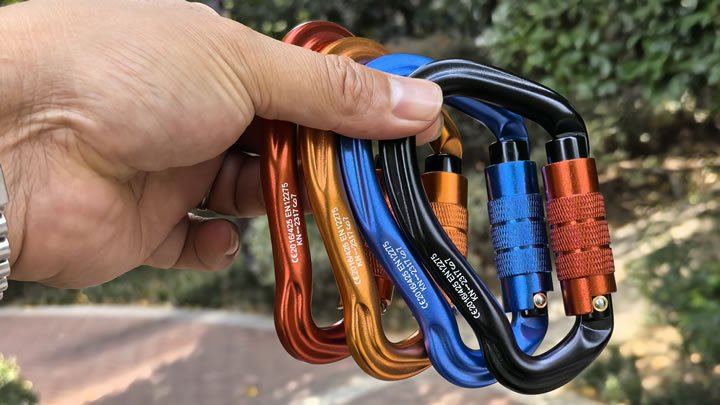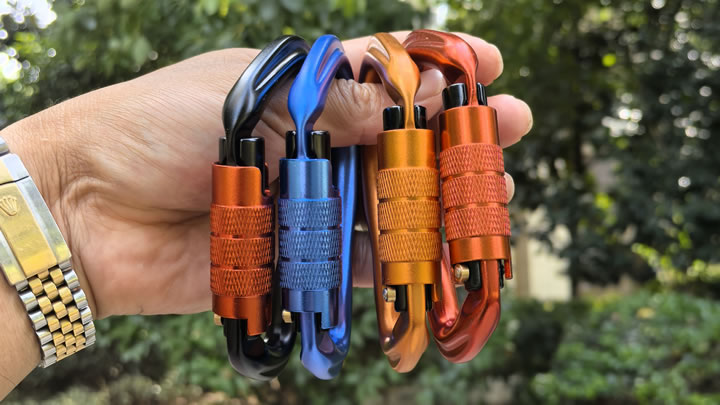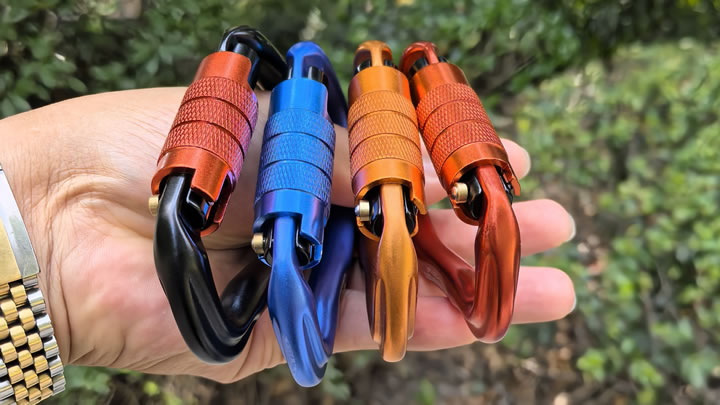Locking vs. Non-Locking Carabiner for Climbing: A Safety-Critical Guide
For any climber, from a gym beginner to a seasoned alpinist, the carabiner is a fundamental piece of equipment. But not all carabiners are created equal. Understanding the critical difference between locking and non-locking carabiners is not just about gear knowledge—it's a core component of climbing safety. Using the wrong type in a critical situation can have dire consequences. This guide will break down their purposes, strengths, and weaknesses to ensure you use them correctly.
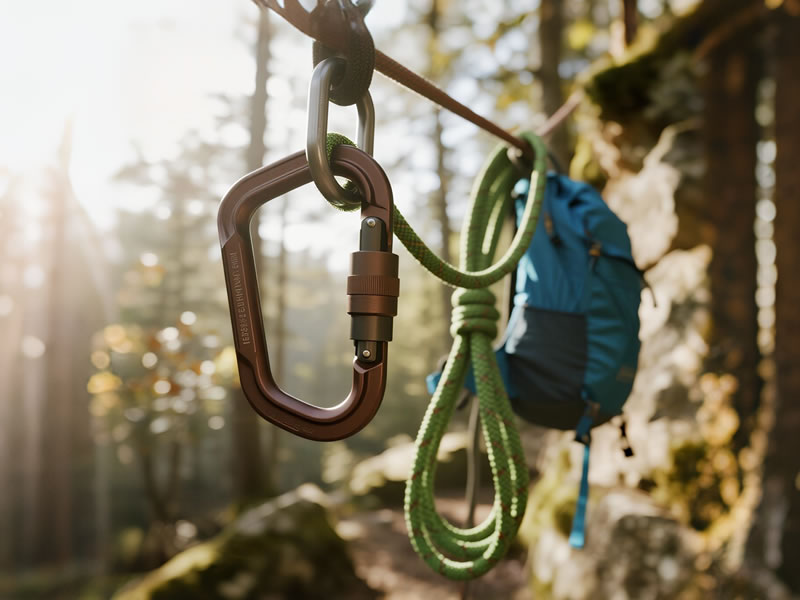
The Non-Locking Carabiner (Snap Gate)
What it is: This is the simplest and most common type of carabiner. It features a spring-loaded gate that opens with a simple push and snaps shut automatically.
Primary Uses:
- Sport Climbing Quickdraws: One non-locker is used on the bolt-end of a quickdraw for easy and rapid clipping.
- Gear Organization: Clipping passive and active protection (cams, nuts) to your harness gear loops.
- Accessory Attachment: Securing items like chalk bags, trail shoes, or portable speakers to your pack or harness.
Strengths:
- Speed and Dexterity: The simple snap-gate action allows for incredibly fast one-handed operation, which is crucial when clipping a bolt mid-route.
- Lightweight: They are significantly lighter than locking carabiners, which matters when you're carrying dozens of them.
Weaknesses:
- Risk of Accidental Opening: The gate can be pushed open by rubbing against the rock, a rope, or another carabiner. This is known as "gate flutter" during a fall or being "cross-loaded" (pressure applied across the gate), which can drastically reduce its strength.
In short: Non-locking carabiners are for convenience and speed, but they are not designed to be your primary, life-saving connection point.
The Locking Carabiner
What it is: A locking carabiner has all the features of a non-locker but includes a locking sleeve that threads over the gate, preventing it from opening accidentally.
Types of Locks:
- Screw-Gate: The most common type. You manually screw the sleeve down to lock it. Requires a conscious action to secure.
- Auto-Locking (Twist-Lock): Models like Petzl's Ball-Lock or Triple-Lock require a specific sequence of twists and pushes to open, making them more secure but slightly slower to operate.
Primary Uses:
- Belay Devices: This is non-negotiable. You must use a locking carabiner to attach your belay device to your harness belay loop.
- Anchors: Any critical point in an anchor system, such as connecting the rope via a figure-8 knot or joining slings and cordelettes, requires a locking carabiner.
- Rappel Setups: All connections during a rappel, including attaching your rappel device, should be made with lockers.
- Critical Rope-to-Harness Connections: While many use a figure-8 follow-through directly to the harness, a locker is a secure alternative.
Strengths:
- Security and Reliability: The locking mechanism eliminates the risk of the gate opening unintentionally, ensuring the connection remains intact.
- Higher Margin of Safety: They provide peace of mind for all life-supporting functions.
Weaknesses:
- Slower to Operate: Screwing and unscrewing takes time and two hands.
- Heavier: The added mechanism makes them heavier, which is why you don't use them for every piece of a trad rack.
The Golden Rule: When in Doubt, Lock It
A simple but effective mantra for climbers is: "If a mistake here would mean I hit the ground, use a locker."
Your belay device? Locking carabiner.
The master point of your anchor? Locking carabiner.
Clipping a quickdraw to a bolt? Non-locking is standard and safe.
Best Practices & Pro Tips:
- Always Check and Double-Check: Before you leave the ground or weight a rope, visually and physically check that your locking carabiners are properly locked.
- Avoid Cross-Loading: Even a locked carabiner is weak if loaded across its minor axis. Ensure the load is always on the spine.
- Gate Direction: When setting up an anchor, orient the carabiner gates so they won't unscrew against the rock or each other. "Opposed and reversed" is a common safe configuration.
Conclusion
Choosing between a locking and non-locking carabiner is not a matter of preference; it's a matter of protocol and safety. Non-lockers are the workhorses for efficiency on the rock face, while lockers are the guardians for every life-critical connection. By understanding and respecting the role of each, you build a foundation of safe practices that protect both you and your climbing partners.


